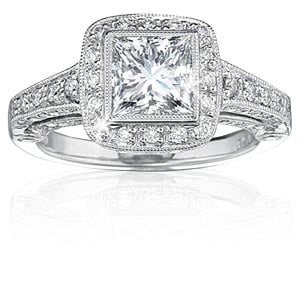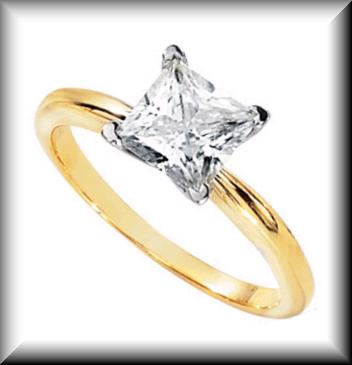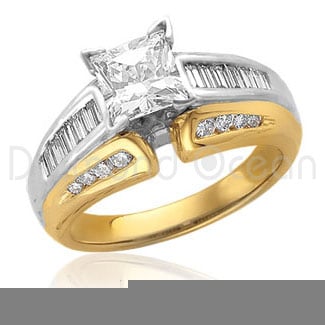Buying a diamond engagement ring is not a piece of cake
Smart guys not only acquire precious love but also know how to buy valuable jewelry
So you love her and you are ready to buy an engagement ring for her. It seems fairly simple: Treat. Here's the plan: Withdraw cash from any ATM or sign up checks or bring your new or heavily abused credit card into a form of transport into jewelry, choose what you like, pay and leave. It may be literally that easy! Buying an engagement ring is a piece of cake for some, but buying a good one is a bit more difficult, so become smart enough before buying your first diamond.
Let me define what is a good diamond: A good diamond is one that will hold its value (what you paid for) or increase in value over the time period. For 2009, only one out of 50 diamonds sold to an endusers (that is) will hold its value or increase in value. The other 49 (98 percent of the game) will have an average value of the secondary market only 19.7 percent of the original purchase price. This means that if you do not know how to choose a good diamond, you will have loss of value of your diamond by over 80 percent! A poorly selected diamond, which you will buy at 5000 dollars (245,000 INR) will sell off somewhere around 1000 dollars (48840 INR) after the 30-day return policy expires. Obviously, I do not want that to happen. I want that the new diamond you are going to purchase now will keep on increasing in value for years to come.
So you say yes, I knew it that a smart will say YES, so it is better to do your homework before purchasing your diamond rings and follow these simple strategies by me for you so that you do not fall prey to misleading diamond sellers.

Strategy #1: What is your budget?
Go ahead, think, and set up a reasonable amount that you would like to spend before you go for buying your first diamond. A recent research in India has shown that people who purchase diamond engagement rings spend somewhere around 2000 to 4000 dollars on an average. If you will do your homework, you should easily be able to get the diamond of your dreams less than the price.
Diamond engagement rings but better check them before buying. Personal advice
Strategy #2: Think like a detective
Put on your detective hat and find out what shape and size of the diamond your wife or lover would like and what kind of approach she has for them as well and this information can be obtained by her best friend or mother. You can also walk through a mall with her having jewelry outlets, pop into a jewelry outlet and calmly say this phrase to her, "Hey darling, if you could have any jewelry, what do you choose?" and she will say this or that and in this way, you can get to know about her taste. Also, while in that jewelry outlet, get her ring size.




Strategy #3: Brush up your knowledge of diamonds
When you will go in to buy diamond jewelry, it is important to speak in the language of jewelers to get to know what is its fair price. Here comes the time when you should know about 4C and 5C - "cost" to come. Here is a brief tutorial. The 4C stands for carat weight, color, clarity, and cut of the diamond.
I. Carat weight: This is the physical weight of the diamond. It can be described in fractions ¼ ct, ½ ct, 1 ct, etc. or dots .37, .45, .98. When I say points, it indicates percentage points (1 ct is equal to 100 points) or 100 percent of the total, so a 48 ct means the diamond is 48 percent of 1ct. If the quality is good, the largest diamond or what we say "solitaire" costs more.
II. Engagement rings with the average size. Clarity: Here, we describe how the diamond is clean and free from inclusions and blemishes. Defects may be scratches, nicks, or chips outside of the diamond. Inclusions are imperfections that are "included" within the diamond. The clarity scale begins with "perfect" and runs ends at "imperfect". That's the whole scale.
· VS-1 - SI-1 are really good to get if the diamond is to be worn. · -IF - VVS-2 are the best for investment. · I-1 - I-3 are very poor, but this quality is available for very tight budgets.
III. Color: Diamonds come in all colors of the rainbow, but usually the white is better. The alphabet minus A, B and C are used to indicate how the diamond is. White: D, E, F are colorless, G, H, I, near colorless, J, K, L and K through Z are slightly yellow and are of low value.
IV. Size: The proportions of a diamond are critical for the amount of brilliance and beauty (dispersion) we see. Diamonds are available in four classes of cut. Class I and Class II are well proportioned diamonds and average 88-93 percent light return. Class III and Class IV are not properly proportioned and average only 33-38 percent light return.
V. Cost: Instead of putting a sheet of money that does not stay current, have a good list of resources for the best price possible, you can get for any carat weight, clarity, color and cut.
Strategy #4: Choosing Quality
While a poor quality of diamonds can be bought as soon as it takes to go to 7-11, some diamonds of good quality can take months to find. Your best bet is to start your search six months in advance. If this sounds extreme, think how long it took to find your woman!
So to recap, before buying a diamond engagement ring, you have the best strategy! This includes establishing the budget, her and your expectations, have a good understanding of 4c and 5c, etc. being yourself, and giving enough time to pull out of everything.
Now you have become a very smart lover. Good luck and congratulations for your engagement with the love of your life.









